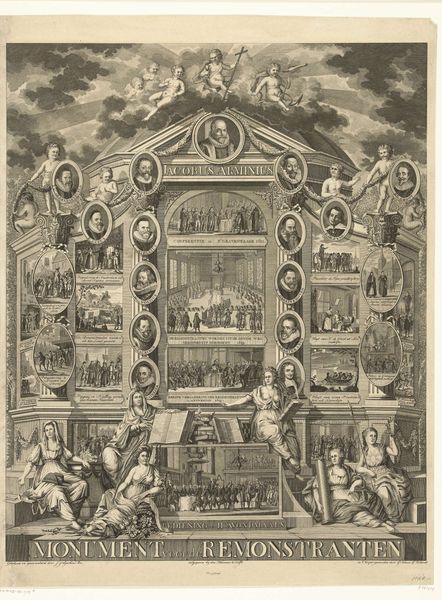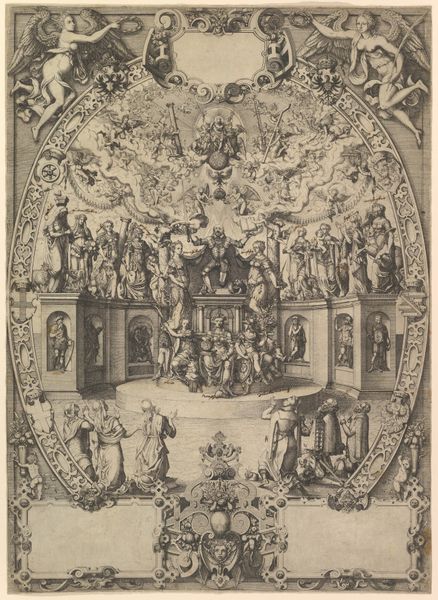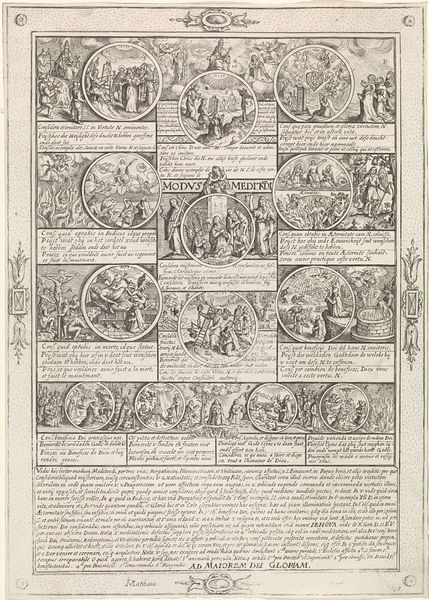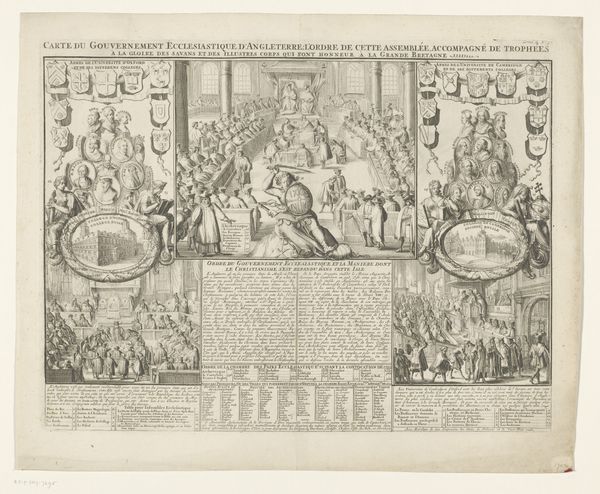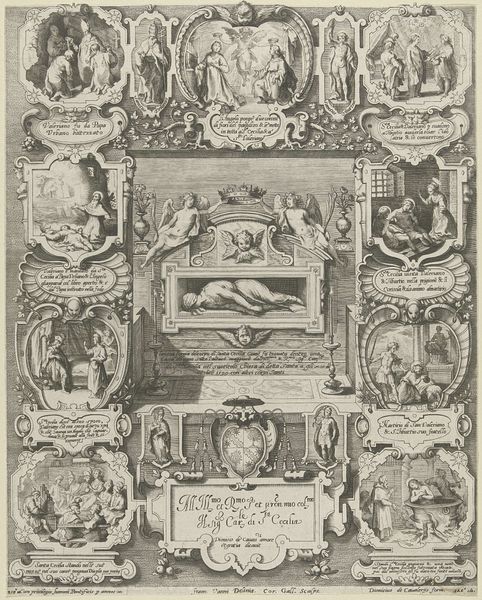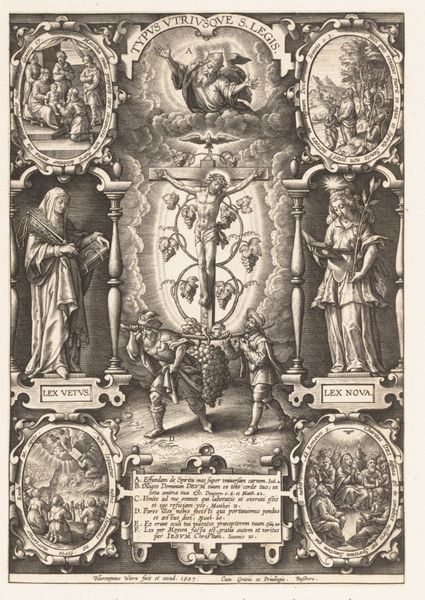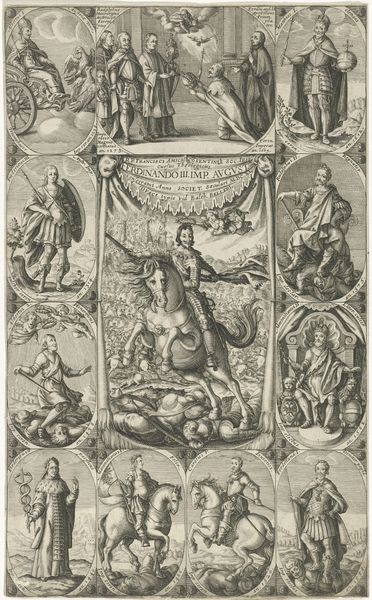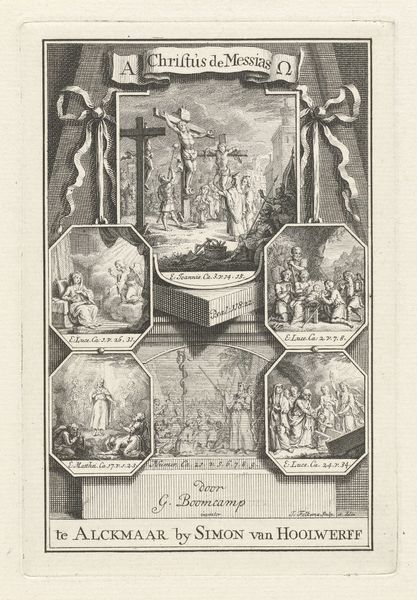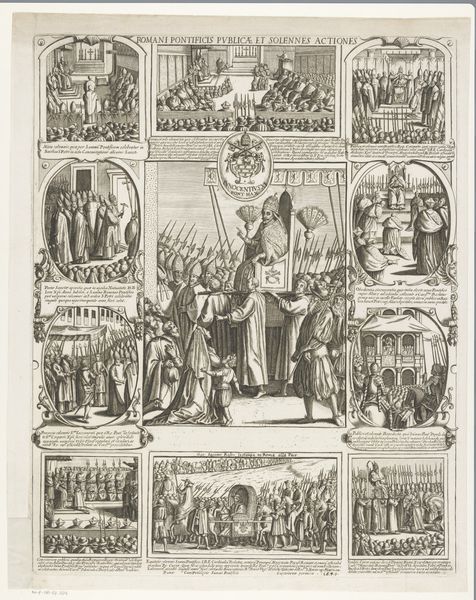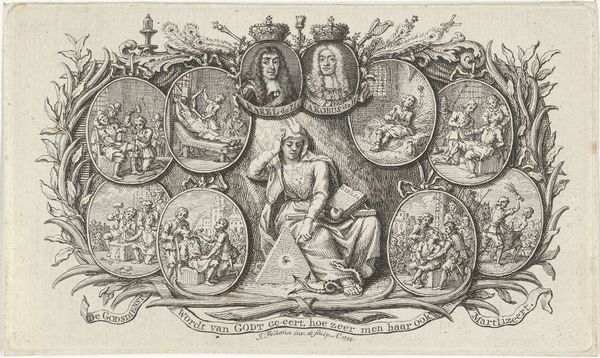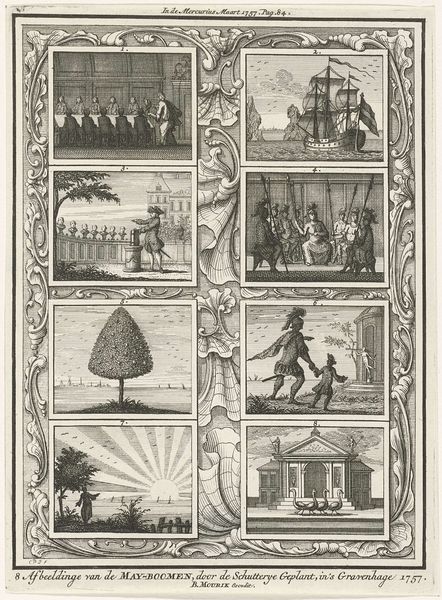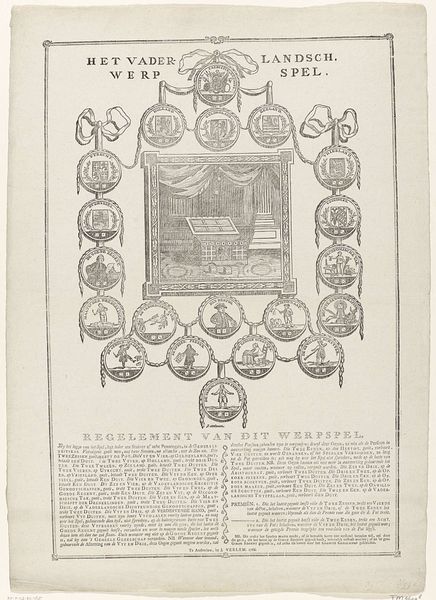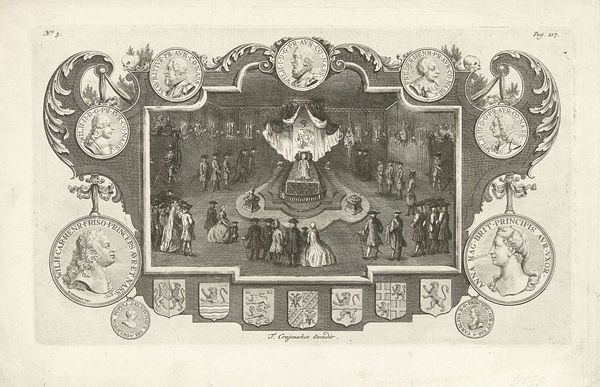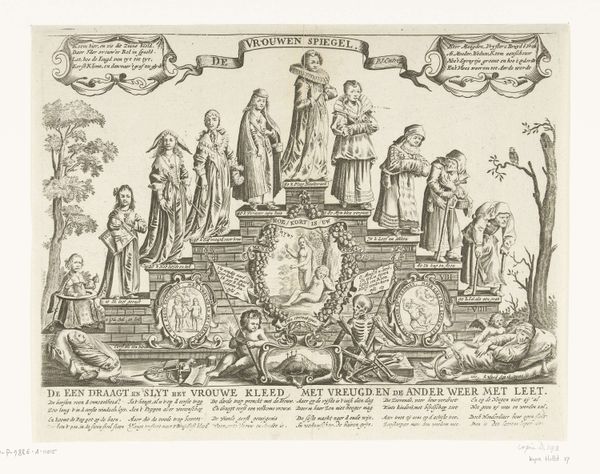
H. Bernardus van Clairvaux onder boom der Cisterciënzers 1619 - 1623
0:00
0:00
print, engraving
#
baroque
# print
#
old engraving style
#
figuration
#
history-painting
#
engraving
Dimensions: height 552 mm, width 453 mm
Copyright: Rijks Museum: Open Domain
Curator: This print, "H. Bernardus van Clairvaux onder boom der Cisterciënzers," made between 1619 and 1623 by Lucas Vorsterman I, presents quite the visual puzzle, doesn’t it? What strikes you most about this intricate engraving? Editor: I think its like…a family tree, almost? The circles all linked together. I guess the main guy is Saint Bernard of Clairvaux with a tree emerging from his head... So, what is all this symbolism really about? Curator: Well, it's precisely that – a family tree, but not in the traditional sense. It depicts the lineage and history of the Cistercian Order, founded by Saint Bernard. Think of the circles as blossoms on a genealogical tree, each representing a significant figure or event in the order's history. The roots, of course, are firmly grounded in Bernard himself. Are you picking up on the implications of growth, of a system rooted in a key ideology, and how powerful an image that would be during the Counter-Reformation? Editor: Right, so each little picture tells a story, solidifying the legacy… It's like visual propaganda, in a way. A bit heavy on the symbolism, though. Was that common in Baroque art? Curator: Precisely! Baroque art, particularly religious art, reveled in symbolism and dramatic representation. This print serves not just as a historical record but also as a visual sermon, aimed to inspire piety and reinforce the order's authority. Now, consider the print medium itself - accessible, reproducible... a highly effective tool for spreading ideas, don't you think? Editor: That makes sense! Seeing it as a way to spread information and confirm religious devotion changes my perspective a lot. Curator: Indeed. It shows the powerful connection between art, religion, and sociopolitical motives during that time. Baroque artists wanted to instill devotion and reinforce faith through emotional artwork that reflected the Catholic Reformation. Editor: Thanks, I hadn't thought about it like that before, it’s certainly helped me unpack it, the history, the context, it makes such a difference! Curator: My pleasure. Art unlocks a whole historical era, waiting to be uncovered, so it enriches both the present and the future of artistic investigation.
Comments
No comments
Be the first to comment and join the conversation on the ultimate creative platform.
